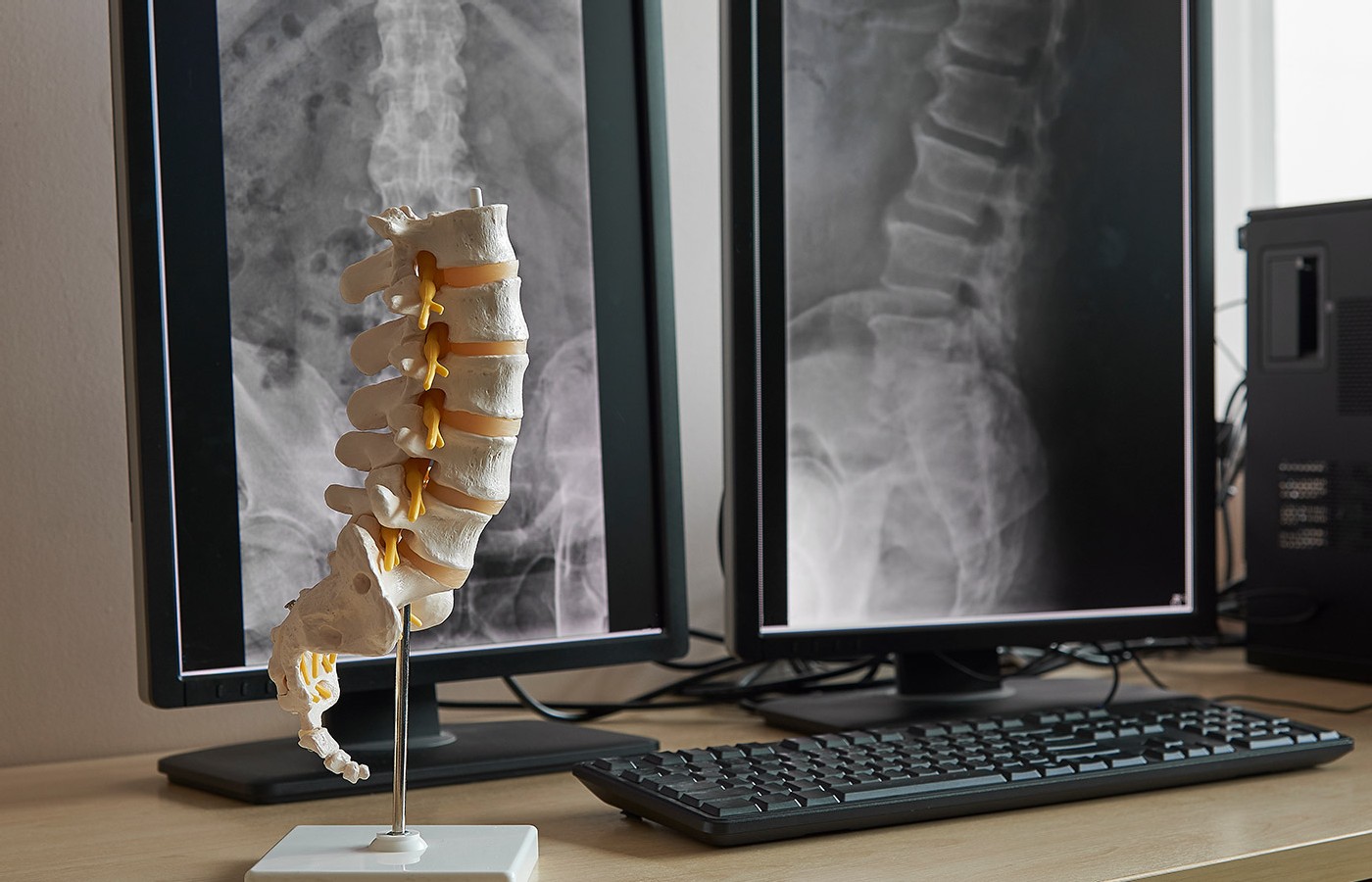Some doctors thrive in a personality-based clinic and have a loyal following no matter what services or equipment they offer, but for most chiropractic offices who are trying to grow and expand, new equipment purchases help us stay relevant and continue to service our client base in the best, most up-to-date manner possible. So, regarding equipment purchasing: should you lease, get a bank loan, or pay cash?
Lumbar Spine Stability: More Than Planks and Crunches
- The secret to long-term management of low back pain is balancing strength, endurance and flexibility of the stabilizers and prime movers of the lumbar spine.
- Patients who have a beautiful set of six-pack abs may actually have intrinsic stabilizer weakness which is responsible for their back pain.
- Simply handing patients an exercise sheet for front and side planks is not sufficient. In fact, it will reinforce the aberrant movement pattern that already exists.
Muscles can be classified into two broad groups: prime movers and stabilizers. Prime movers are large, superficial and responsible for movement, acceleration and power. Stabilizers are small, produce little movement, deeper and provide a stable foundation locally for the prime movers to act upon. In the functional movement paradigm, the mantra of local stability creates distal mobility underscores this concept.
The secret to long-term management of low back pain is balancing strength, endurance and flexibility of the stabilizers and prime movers of the lumbar spine. However, this classification of muscles is not rigid since prime movers can create regional stability to assist the local stabilizer muscles. See Table 1 for a comparison of the stabilizers and prime movers in the lumbopelvic hip region to visualize this interplay.
Clinical Tip: The rectus abdominus is classified as a prime mover. Therefore, patients who have a beautiful set of six-pack abs may actually have intrinsic stabilizer weakness which is responsible for their back pain.
The term spinal stability refers to the ability to withstand buckling and compressive loads, as well as controlling intersegmental translation and rotation during movement. This occurs through different mechanisms involving tension in the thoracolumbar fascia and intra-abdominal pressure.
|
|
|
| TABLE 1 | |
|
|
|
| Stabilizers | Prime Movers |
|
|
|
| TA | Rectus Abdominus |
|
|
|
| Internal Oblique | External Oblique |
|
|
|
| Multifidi | Erector Spinae |
|
|
|
| Diaphragm | Quadratus Lumborum |
|
|
|
| Pelvic Floor | Gluteus Maximus |
|
|
|
| Deep Erector Spinae | Hamstrings |
|
|
|
| Gluteus Medius (deep fibers) |
Gluteus Medius (superficial fibers) |
|
|
|
Generally, the thoracolumbar fascia stabilization mechanism protects the spine from translational and rotational loads; whereas the intra-abdominal pressure mechanism is best suited to resist against compressive loads and buckling.
The muscles primarily involved with spinal stability, or stiffness as McGill calls it, involve the deep fibers of the multifidus, transverse abdominus, internal oblique, pelvic floor and diaphragm. Together they protect the spine against compressive and rotational forces from simple to complex movements.
A common imbalance between stabilizers and prime movers is related to motor control. The prime movers are easier to control volitionally, they want to engage immediately to produce the desired movement. Over time, with ADLs or with exercise, the dominant prime movers get steadily stronger, whereas the stabilizers lag behind. This imbalance is termed synergistic dominance – the strong muscles keep getting stronger and the weaker muscles just never get a chance to catch up. This is the reason stabilizer muscles need to be selectively strengthened.
Clinical Tip: Synergistic dominance is addressed with corrective exercises. Simply handing patients an exercise sheet for front and side planks is not sufficient. In fact, it will reinforce the aberrant movement pattern that already exists. The stabilizers must be targeted.
Abnormal motor control, often demonstrated as a loss of the ability of the stabilizers to engage before the prime movers, has been correlated with LBP. One technique to address this is to have the patient simply engage the stabilizers first and then add global movement. While it does provide motor control of the stabilizers, this pattern needs to be translated to ADLs that require spontaneous coordination of muscle firing patterns.
Another technique to restore abnormal motor control is to simplify the movement pattern by changing variables such as reducing the base of support, body position, or perhaps using a biofeedback device or diagnostic ultrasound to create body awareness of the stabilizers. Peel back the activity to where the patient is successful and then build them up from that point. Often stability rehab incorporates a combination of both techniques.
The transverse abdominus (TA) is a major contributor to intra-abdominal pressure control and functions closely with the diaphragm and pelvic floor. It is a sheet-like muscle attaching to the inguinal ligament, iliac crest, all three layers of the thoracolumbar fascia, and the lies deep to the internal and external obliques muscles. It helps to protect the lumbar spine from both compressive and rotational loads.
Rehab to improve TA function often begins with motor control; the muscle needs to be actively contracted or engaged by the patient. As mentioned above, once the patient can find the TA, then strength and endurance can be developed in conjunction with dynamic compound movements.
Clinical Tip: To find the TA, have the patient place their fingers approximately 1” medial and inferior to the ASIS and attempt a slow and gentle inward movement of the lower abdominal wall. TA activity will feel like a deep tensioning, whereas internal oblique tightening will feel like a bulge. This is best performed side-lying with knees bent.
It is proposed that both abdominal hollowing (drawing in the abdominals) and a 360-degree abdominal bracing maneuver both engage the TA and internal oblique. An in-depth comparison of these different techniques is beyond the scope of this article; however, in the current research the bottom line is abdominal hollowing is effective for helping patients isolate or “find” the TA, and beneficial in the early stages of LBP rehab when combined with a posterior pelvic tilt.
The Prague School approach of 360-degree bracing (pushing the abdominals out circumferentially) engages both deep and superficial spinal stabilizers to modulate intra-abdominal pressure, intersegmental and rotational sheer forces. Both have benefit depending on the individual patient.
The deep fibers of the multifidus are considered stabilizers since they are local and contribute little to movement. They attach to the lamina, transverse two spinal segments and provide limited spinal extension yet create intersegmental stiffness – ideal for segmental spine stability.
The superficial fibers run several spinal segments and extend the spine and can increase the lumbar lordosis, thus can act similar to a prime mover. To teach the patient to selectively activate the deep multifidi fibers have them lie prone and while you palpate the multifidus instruct them to swell or push against your thumbs. It is acceptable to have co-contraction of the TA, but not the superficial abdominal muscles.
Clinical Tip: The Quadruped or Bird-Dog exercise is the accepted exercise to strengthen and increase endurance of the multifidus. Be sure the pelvis remains level and segmental stability is maintained to ensure the deep fibers are engaged.
Perhaps the most overlooked core stabilizers are the diaphragm and pelvic floor muscles. They work in concert with the TA and internal oblique, and primarily protect against compressive loading. Start by teaching the patient diaphragmatic breathing exercises such as crocodile breathing. Then teach them to breathe involving the entire abdominal cannister: lower the pelvic floor and diaphragm in unison during inspiration and raise the pelvic floor and diaphragm as the patient exhales.
Patients are more informed about their back pain and the treatments available. Whether it is a YouTube chiropractic influencer or simply Dr. Google, they are ready to find out “what and why” relative to the care you are recommending. They probably already tried the remote exercise APP or virtual PT consult and it did not work.
The answer is individualized care for each patient – tailoring their core stability exercise to their needs and ability. Low back pain is managed and achieving segmental and regional stability for ADLs and sport is essential for long-term management.
Resources
- Beliveau PJH, Wong JJ, Sutton DA, et al. The chiropractic profession: a scoping review of utilization rates, reasons for seeking care, patient profiles, and care provided. Chiropr Man Therap, 2017 Nov 22;25:35.
- Clark M. Essentials of Corrective Exercise. Calabass CA: National Academy of Sports Medicine, 2007.
- Golob I, et al. Abdominal hollowing vs. abdominal bracing: a scoping review of clinical trials on effectiveness for trunk stability and rehabilitation. J Funct Morphol Kinesiol, 2024 Oct 10;9(4):193.
- Liebenson C. Rehabilitation of the Spine, 2nd Edition. Philadelphia, PA: Williams & Wilkins, 2016.
- McGIll S. Ultimate Back Fitness and Performance, 6th Edition. Stuart McGill, 2017.
- McGill SM. Lee BC. Effect of long-term isometric training on core/torso stiffness. J Strength Cond Res, 2015 Jun;29(6):1515-26.



